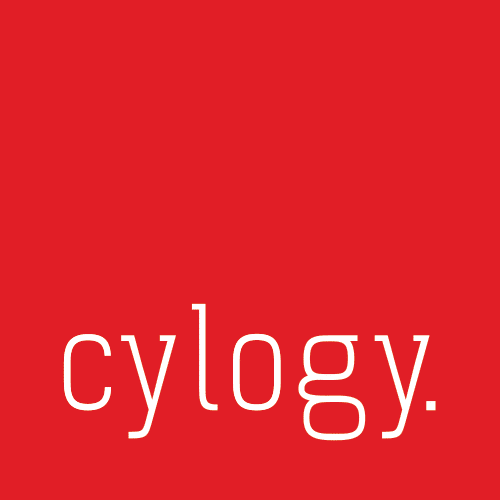The annual Sitecore Symposium is one of the highlights of our year. We gain insights, learn about new techniques and approaches, see some great examples of Sitecore in action and get all the updates on the Sitecore roadmap. It’s nearly three days of full-on Sitecore geekiness and we love it.
This year’s Symposium held in Orlando delivered its usual mix of star keynotes, announcements, demonstrations and great examples of Sitecore in action. Over four tracks covering everything from DevOps and Sitecore development to explorations into customer experience, there were both thought-provoking and highly practical sessions. There was also strong networking – the Symposium is always an excellent opportunity to connect with the global Sitecore community, catch up with old friends and make new ones.
Here at Cylogy we took a multidisciplinary team down to the Symposium. Here are some of our main takeaways.
Sitecore recognizes the value of headless
Headless has been a major theme in the CX and Web CMS world for a few years now, reflecting the importance of being able to present content in different experiences such as apps. Arguably, Sitecore has always been a headless CMS although that has not always been the focus nor has it historically been how Sitecore has positioned itself.
This year Sitecore made a significant effort to showcase its headless capabilities at multiple levels. At the center of this was the recently launched Sitecore JavaScript Services (Sitecore JSS) , an SDK that is designed to enable JS-based application or site development to be carried out by developers with little or no Sitecore experience. We believe anything that potentially opens up Sitecore and enables the CMS and its content to drive even more great customer experiences is welcome news.
DevOps gets some love and attention
As well as having its own dedicated track, there were some welcome updates to support more effective DevOps around deployments, upgrades and performance tuning.
In the DevOps world the use of containers (such as Docker) has skyrocketed and is now standard practice for many. However, up until recently the use of containers with Sitecore has been problematic from a few perspectives, performance and ease of use among them.
Many of us were pleased with the confirmation that Sitecore will be officially supporting containers for Sitecore deployments and will be rolling out Sitecore-official assets for containerized Sitecore, currently targeted for Summer 2020. We spoke with several large partners who have already vetted this approach and will be employing it with their clients immediately. We expect the adoption of this to move quickly.
There were some strong nuts and bolts sessions on upgrading Sitecore. This is a common pain point for the Sitecore community; we like the focus on tools and features that Sitecore is rolling out to make the upgrade process easier and faster.
There were also a number of solid sessions on Sitecore performance tuning, which can be critical as Sitecore deployments become larger and more complex. We were encouraged to see that interest in this topic hasn’t waned since we presented our insights at the 2013 Sitecore Symposium, as many of these optimizations can benefit all clients.
Sitecore is accelerating its entry into the DAM market
Sitecore entered the crowded Digital Asset Management (DAM) market when it acquired Stylelabs. Since then it has been working hard to integrate it into the core platform as the rebranded Sitecore Content Hub, a DAM platform with related content management and marketing tools such as a resource planner and campaign calendar. We fully expected this to be showcased heavily at Symposium and it was good to get the opportunity to get a deep dive into what it can do.
The results certainly look promising although it’s still relatively early days. In particular, guidelines driving the cooperation between Content Hub’s complex content creation capabilities with the core Sitecore product continue to evolve. We look forward to further exploring how current Sitecore clients can leverage the product’s unique strengths in integrated scenarios, and expect the Content Hub to come into its own through 2020.
Sitecore wants to drive real world adoption of advanced marketing and analytics
A recurring theme in recent Symposiums has been a concern that not enough organizations fully exploit the power of Sitecore’s marketing and analytics features, despite that being a big selling point. Sitecore continues to drive adoption of these capabilities by empowering partners to assist customers in taking full advantage of them.
In this Symposium we saw some strong case studies showcasing real-world examples of Sitecore delivering advanced analytics and marketing automation, not only from large organizations who have the resources to support that kind of work, but also from smaller and mid-sized customers. In most cases we heard from the actual customer rather than the implementation partner, making for valuable sessions with specific details rather than glossy “marketing speak”.
The case studies really do suggest there is a welcome increase in the adoption of personalization. Additionally there were some more aspirational demonstrations using advanced machine learning and marketing automation; it will be interesting to see how customers start to experiment in this area too.

There were some thoughtful sessions on how Sitecore partners can better guide and promote marketing feature adoption with their clients. Indeed, our role can transition from demoing the technical capabilities of advanced marketing features to actually supporting customers in defining and executing their marketing strategy, covering elements such as segmentation, metrics and ROI.
See you in 2020?
The team loved attending 2019 Sitecore Symposium in Orlando and we’re already looking forward to visiting Chicago in 2020! Are you going?




